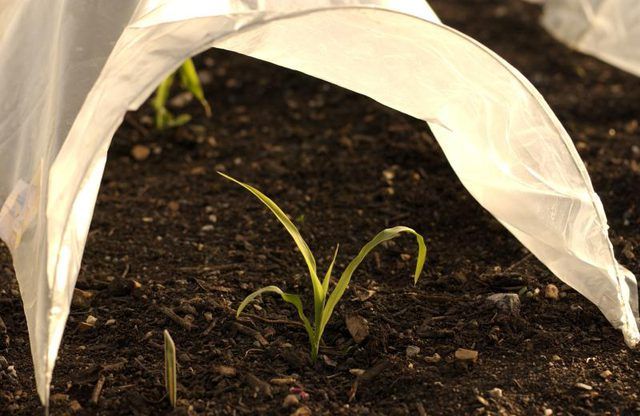Bulbs
Flower Basics
Flower Beds & Specialty Gardens
Flower Garden
Garden Furniture
Garden Gnomes
Garden Seeds
Garden Sheds
Garden Statues
Garden Tools & Supplies
Gardening Basics
Green & Organic
Groundcovers & Vines
Growing Annuals
Growing Basil
Growing Beans
Growing Berries
Growing Blueberries
Growing Cactus
Growing Corn
Growing Cotton
Growing Edibles
Growing Flowers
Growing Garlic
Growing Grapes
Growing Grass
Growing Herbs
Growing Jasmine
Growing Mint
Growing Mushrooms
Orchids
Growing Peanuts
Growing Perennials
Growing Plants
Growing Rosemary
Growing Roses
Growing Strawberries
Growing Sunflowers
Growing Thyme
Growing Tomatoes
Growing Tulips
Growing Vegetables
Herb Basics
Herb Garden
Indoor Growing
Landscaping Basics
Landscaping Patios
Landscaping Plants
Landscaping Shrubs
Landscaping Trees
Landscaping Walks & Pathways
Lawn Basics
Lawn Maintenance
Lawn Mowers
Lawn Ornaments
Lawn Planting
Lawn Tools
Outdoor Growing
Overall Landscape Planning
Pests, Weeds & Problems
Plant Basics
Rock Garden
Rose Garden
Shrubs
Soil
Specialty Gardens
Trees
Vegetable Garden
Yard Maintenance
How to Build a Row Cover Frame
How to Build a Row Cover Frame. Fabric row covers keep disease-causing insects away from garden vegetables, which means you may not need to use insecticides, and they can also be used to extend the growing season for frost-sensitive crops. Row covers can be laid directly on plants, but building a frame helps prevent damaged stems and branches. One...

Fabric row covers keep disease-causing insects away from garden vegetables, which means you may not need to use insecticides, and they can also be used to extend the growing season for frost-sensitive crops. Row covers can be laid directly on plants, but building a frame helps prevent damaged stems and branches. One method for building a row cover frame is to construct several hoops, insert them in the ground at intervals, then lash them together with clothesline.
Determine the Frame Size
To figure out how tall and wide to build your row cover frame, first determine the mature size of the plants you intend to grow under it. Once you know the height and width, add 6 inches to each to ensure the row cover won't rub against the plants on windy days. For example, if a tomato (Lycopersicon esculentum) variety grows 3 feet tall and 2 feet wide, the frame should be 3 feet 6 inches tall and 2 feet 6 inches wide.
Make the Hoops
Hoops create the main structure of a row cover frame. Their purpose is to hold the row cover fabric up off of plants. They can be formed out of any flexible material that won’t break -- heavy, galvanized 9-gauge wire works well and you can buy it from home improvement stores in rolls. The length of your hoop depends on the mature height of the crop you're growing, plus you need to add an additional 20 inches to allow enough length to insert into the ground to anchor the hoop. Because a wire hoop 2 feet wide is taller than one 4 feet wide, determine the correct length of the wire for your hoop by inserting one end of the wire 10 inches into the ground on one side of the row. Then, form the wire into a hoop, or upside-down U-shape, until it is the correct height at the center of the hoop. Once you have the correct height, add another 10 inches to the length of the wire. Cut the wire and insert it 10 inches into the ground on the opposite side of the row from the first insertion.
Space the Hoops
How far apart you need to space the hoops along the row depends on how sturdy you want the frame. Hoops spaced 2 feet apart make a sturdier frame than those placed 4 feet apart. Also, shorter hoops, such as for growing lettuce (Lactuca saliva), are more stable than taller hoops and can be spaced further apart and have the same stability at hoops spaced 2 feet apart. Stabilize tall hoops, 3 feet tall or more, by tying them together with clothesline at the top and halfway down each hoop on each side. Do this by starting at one end of the row. Tie the line to the top of the hoop, run the line to the next hoop, loop it around the hoop at the top one to two times, then continue down the row till you reach the other end. Repeat along each side. The clothesline on each side also prevents the row cover fabric from sagging onto plants.
Secure the Fabric
Row cover fabric only keeps pests out if it reaches all the way to the ground and is secured to the ground without any gaps. You can do this by fitting the cover to the frame and allow at least 6 inches of extra fabric on all four sides of the frame. Lay the extra fabric flat on the ground and hold it in place by pushing garden staples through the fabric into the soil, or shovel soil onto the fabric. Bricks and boards can also be used to hold the fabric down.